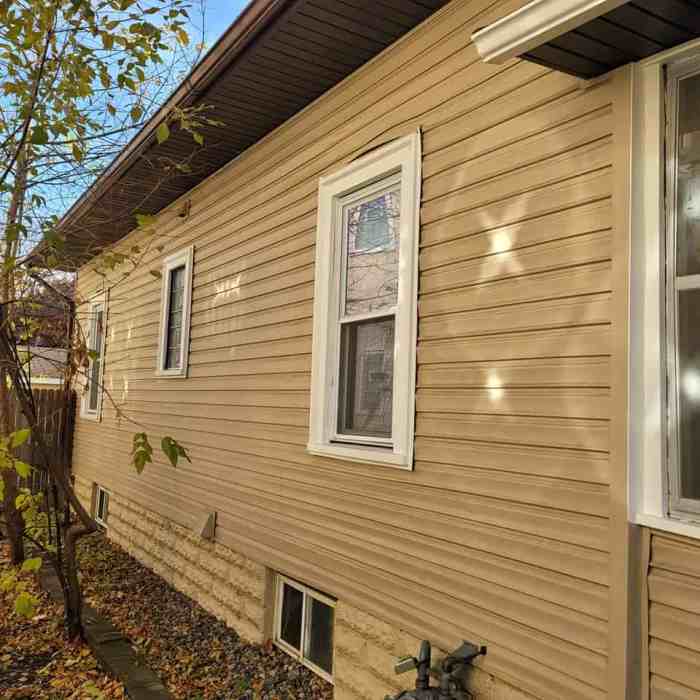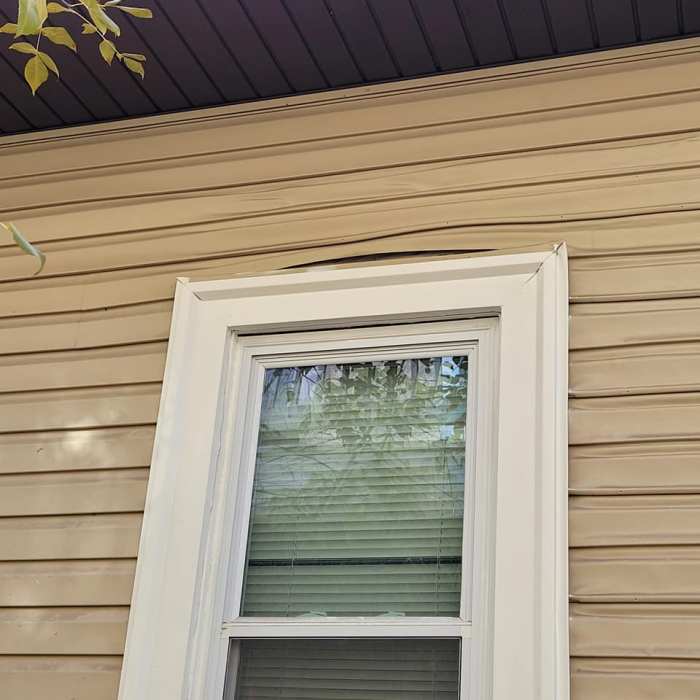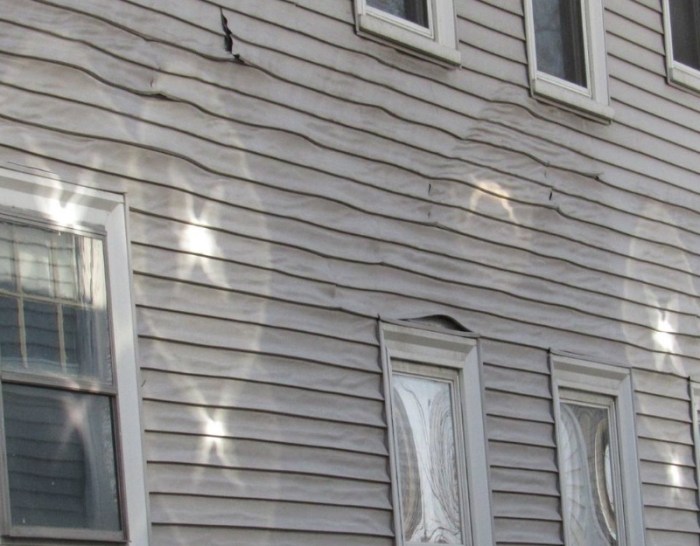Exploring the Impact of Melted Siding on Your Home
Delve into the world of melted siding as we uncover the causes, types, prevention tips, and repair solutions. Discover how this common issue can affect your home and what you can do about it.
Causes of Melted Siding

When it comes to melted siding, there are several common reasons that can lead to this issue. One of the primary causes is heat exposure, which can have a significant impact on vinyl siding.
Heat Exposure
Excessive heat, whether from direct sunlight or reflective surfaces, can cause vinyl siding to melt. When the temperature rises, the vinyl material softens and begins to warp, resulting in a melted appearance. This can occur on the sides of a house that are more exposed to the sun throughout the day.
Sunlight Impact
The sunlight can play a major role in the melting of vinyl siding. The UV rays from the sun can heat up the siding, especially in areas where the sunlight is intense and consistent. Over time, this exposure can cause the siding to deform and melt, leading to unsightly damage to the exterior of the home.
Types of Siding Prone to Melting
When it comes to siding materials, not all are created equal in terms of heat resistance. Some types are more prone to melting than others due to their composition and properties.
Vinyl Siding
Vinyl siding is one of the most common types of siding found on homes, but it is also one of the most susceptible to melting. This is because vinyl has a relatively low melting point compared to other materials.
Wood Composite Siding
Wood composite siding, which is made from a mixture of wood fibers and resin, can also be prone to melting under high temperatures. The resin component in the siding can soften and deform when exposed to heat.
Fiber Cement Siding
Fiber cement siding, although more fire-resistant than vinyl or wood composite siding, can still melt under extreme heat conditions. The cement component in the siding can reach its melting point and cause the material to warp or deform.
Aluminum Siding
Aluminum siding is another material that can be prone to melting, especially when exposed to direct sunlight for extended periods. The metal can absorb heat quickly and reach a temperature where melting becomes a risk.
Prevention and Maintenance Tips
Proper maintenance and prevention strategies are essential to avoid melted siding and prolong its lifespan. By following these tips, you can ensure your siding remains in good condition.
Proper Installation is Key
One of the most crucial steps in preventing melted siding is ensuring proper installation. Incorrect installation can lead to gaps or warping, which can make the siding more susceptible to melting. Make sure to hire a professional installer who has experience working with the specific type of siding you have chosen.
Regular Cleaning and Inspection
- Regularly clean your siding to remove dirt, debris, and any substances that could potentially cause it to melt.
- Inspect your siding for any signs of damage, such as cracks or holes, and address them promptly to prevent further deterioration.
Proper Ventilation
Ensure that your home has proper ventilation to prevent heat buildup that can lead to melted siding. Proper airflow can help dissipate heat and protect your siding from damage.
Shade and Protection
- Plant trees or install awnings to provide shade to areas of your home where the siding is most exposed to direct sunlight.
- Consider adding heat-resistant barriers or coatings to protect your siding from extreme temperatures.
Repairing Melted Siding

When your siding has melted, it is important to address the issue promptly to prevent further damage and maintain the aesthetic appeal of your home. Repairing melted siding can be done either as a do-it-yourself project or with the help of a professional, depending on the extent of the damage and your level of expertise in home repairs.
Steps for Repairing Melted Siding
- Clean the damaged area: Start by cleaning the melted siding to remove any debris or dirt that may interfere with the repair process.
- Cut out the damaged section: Using a utility knife, carefully cut out the melted portion of the siding, making sure to create clean edges.
- Replace the siding: Cut a new piece of siding to fit the area and secure it in place using nails or screws.
- Seal the edges: To ensure a tight seal and prevent moisture from seeping in, apply a weatherproof sealant around the edges of the new siding.
- Paint or finish: Once the repair is complete, paint or finish the new siding to match the rest of the exterior for a seamless look.
When Professional Help May Be Needed
If the damage to your siding is extensive, or if you are unsure about your ability to effectively repair the melted siding on your own, it may be best to seek the help of a professional contractor. They have the expertise and tools necessary to handle more complex repairs and ensure a high-quality finish.
Materials and Tools Required for DIY Repair
Materials: Replacement siding, weatherproof sealant, paint or finishing material.
Tools: Utility knife, hammer, nails or screws, ladder, paintbrush.
Last Point

As we wrap up our discussion on melted siding, remember that understanding the reasons behind it, knowing how to prevent it, and being prepared to repair it can help maintain the integrity of your home's exterior. Stay informed and proactive to keep your siding in top shape.
Question Bank
What are the common reasons for siding melting?
Siding melting can occur due to excessive heat exposure, proximity to reflective surfaces, or poor quality materials.
How can I prevent my siding from melting?
To prevent siding melting, consider installing shade structures, choosing heat-resistant materials, and ensuring proper ventilation around your home.
When should I seek professional help for fixing melted siding?
If the damage is extensive or if you're unsure about the repair process, it's best to consult with a professional to avoid further complications.




